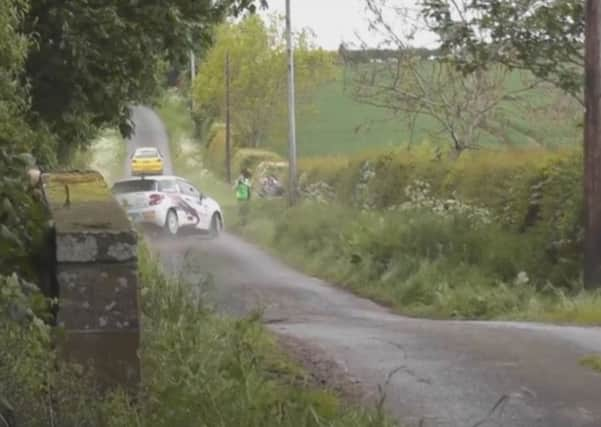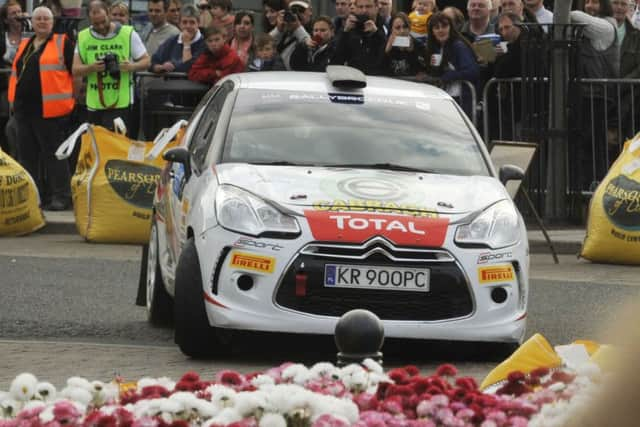2014 Jim Clark Rally triple tragedy was avoidable, rules sheriff


Sheriff Kenneth Maciver slammed the rally’s system for identifying and overseeing safe viewing spots for spectators as “weak, ambiguous and ultimately inadequate”.
In his fatal accident inquiry report, published today following weeks of hearings earlier this year, Mr Maciver added that it was down to good luck rather than good planning that the car responsible for the three deaths had been stopped from going any further, and potentially knocking over even more onlookers, by a post and hedgerow.
Advertisement
Hide AdAdvertisement
Hide AdThe three people killed were photographer Iain Provan, 64, his partner Betty Allan, 63, both of Barrhead in East Renfrewshire, and spectator Len Stern, 71, of Bearsden in East Dunbartonshire.


They died of multiple injuries caused by rally driver David Carney losing control of his car, careering off the road and crashing into them in May that year, Mr Maciver found.
The report follows a joint inquiry at Edinburgh Sheriff Court into the three deaths at the 2014 Jim Clark Rally and that of spectator Joy Robson, 51, at the Snowman Rally near Inverness in 2013.
Mr Maciver ruled that there were no reasonable precautions by which Mrs Robson’s death could have been avoided, but he found that the three deaths at the Borders rally could have been averted if people had not been allowed to watch it from an unsafe vantage point.
Advertisement
Hide AdAdvertisement
Hide AdHe writes: “In respect of the Jim Clark Rally 2014, I find that there was a weak, ambiguous, and ultimately inadequate verification system for checking the proper performance of the work of stage commanders or stage set-up crews in delineating and clearly identifying areas which, for safety reasons, were prohibited for spectators.”


He has issued 12 recommendations for rally organisers and other authorities and suggested a further 11 matters for consideration.
Saying that it was lucky Mr Carney’s car had not careered further off the road, potentially putting more people in danger, Mr Maciver writes: “The car which crashed at the Jim Clark Rally in 2014 came to rest just within what would and should have been the 3m prohibition area, but, in fact, that was good fortune linked to the fact that it hit a large solid strainer post and a substantial hedgerow.
“It should be recognised that on many occasions a car going off the road at speed in such a location would travel much further, and I therefore suggest that consideration be given by rally organisers, that for open locations such as entrances, the safety zone or box should be many yards deep, as was the general pre-2014 policy at that rally.”
Advertisement
Hide AdAdvertisement
Hide AdA designated prohibited area north of the Leet Bridge should have been created, delineated and identified so that it clearly banned spectators or photographers from standing there, he said.
He recommends that all rallies should have clear plans for setting up areas off limits to spectators and those plans be given to marshals and the crews of all safety cars.
In addition, he advises, at least one safety car should be given the job of ensuring that any such banned areas are properly marked out, adding: “A patent omission was missed time and again by several different cars.”
A spokesman for the rally’s organisers said: “Those involved in the organisation of the rally have received a copy of the sheriff’s determination.
Advertisement
Hide AdAdvertisement
Hide Ad“This is quite a lengthy and detailed report which will have to be read and digested, after which senior officials will meet up to discuss it and its findings.”
Berwickshire, Roxburgh and Selkirk MP John Lamont said he hopes that lessons can now be learned, allowing the Jim Clark Rally to make a comeback.
“This inquiry will go some way to provide clarity to those who lost their loved ones in the tragic events of 2013 and 2014,” he said.
“Clearly, lessons need to be learned and the Motor Sports Association and the Jim Clark Rally’s organisers must now look to implement the recommendations, in full, as soon as possible.
Advertisement
Hide AdAdvertisement
Hide Ad“Many of these recommendations are already being implemented by the Motor Sports Association, and I would therefore expect this work to be completed quickly.
“It is my hope that now we have this judgement, the organisers, the association and Scottish Borders Council can move forward to ensure a safe Jim Clark Rally can be held again as soon as possible.”
The rally, held in tribute to Berwickshire motor-racing champion Jim Clark since 1970, has not been staged since 2014’s triple tragedy.
First run as a closed-road event in 1997, the rally can trace its roots back to 1970, two years after the death at the age of 32 of the Berwickshire farmer it is named after.
Advertisement
Hide AdAdvertisement
Hide AdThat first event used a variety of farm, forest and military roads, but it went on to become one of the UK’s premier forest stage rallies in the 1980s and was estimated to generate £3.5m annually for the Borders economy in recent years.
A variant event starting in Kelso and heading around Kielder Forest was held in 2015, but a follow-up forest rally in 2016 but had to be cancelled due to insufficient entries.
In his report, Mr Maciver also calls for rally organisers to appoint a spectator safety officer at the early stages of planning and for all marshals to wear coloured vests to make sure there is no confusion about their role.
Rally organisers are also recommended to have a system for recording crashes, accidents, cars leaving the track or near misses to help them identify possible accident blackspots.
Mr Maciver also wants to see the introduction of a warning light system within rally cars to make sure they can be stopped as quickly as possible in the event of further accidents.